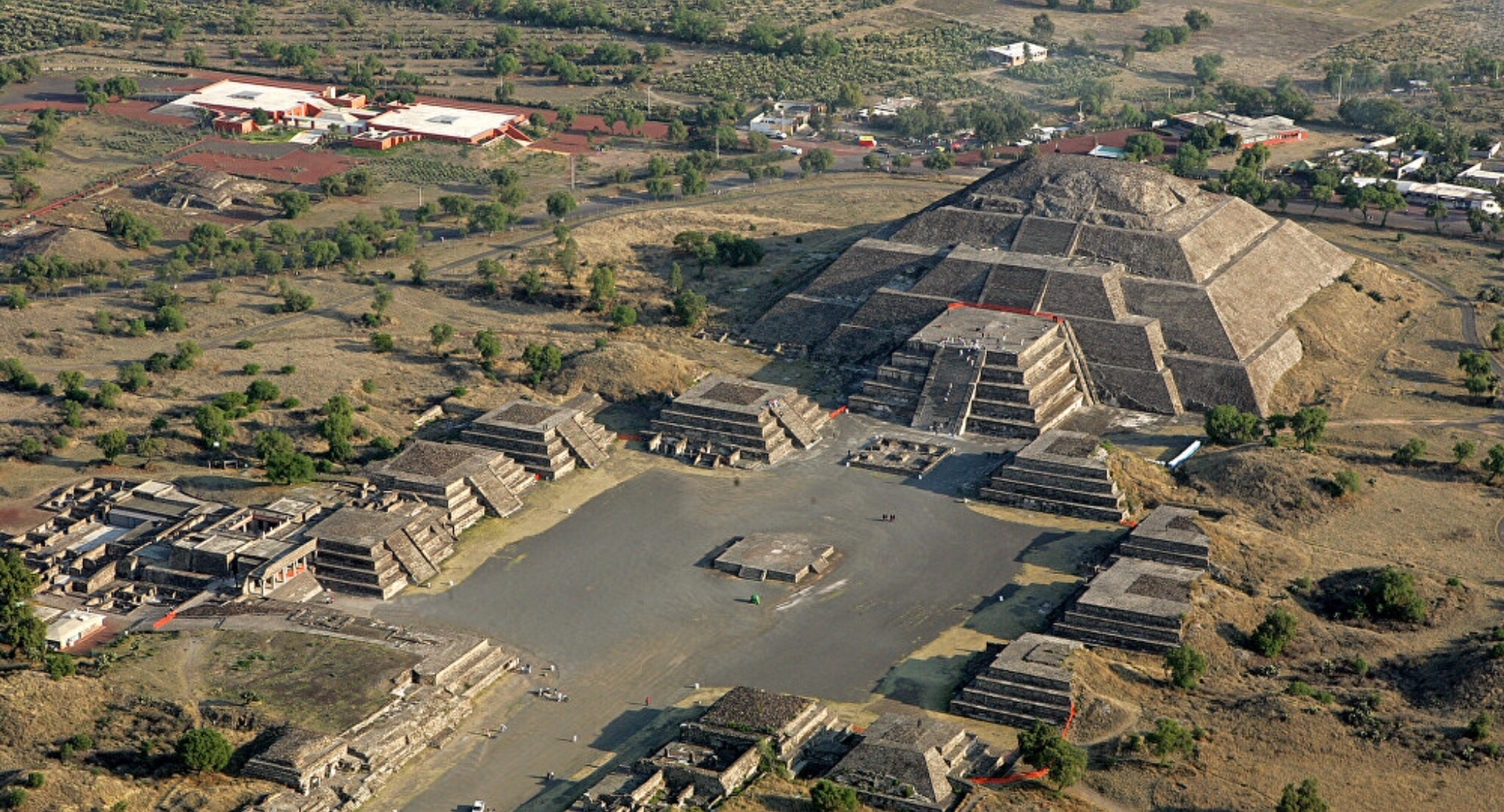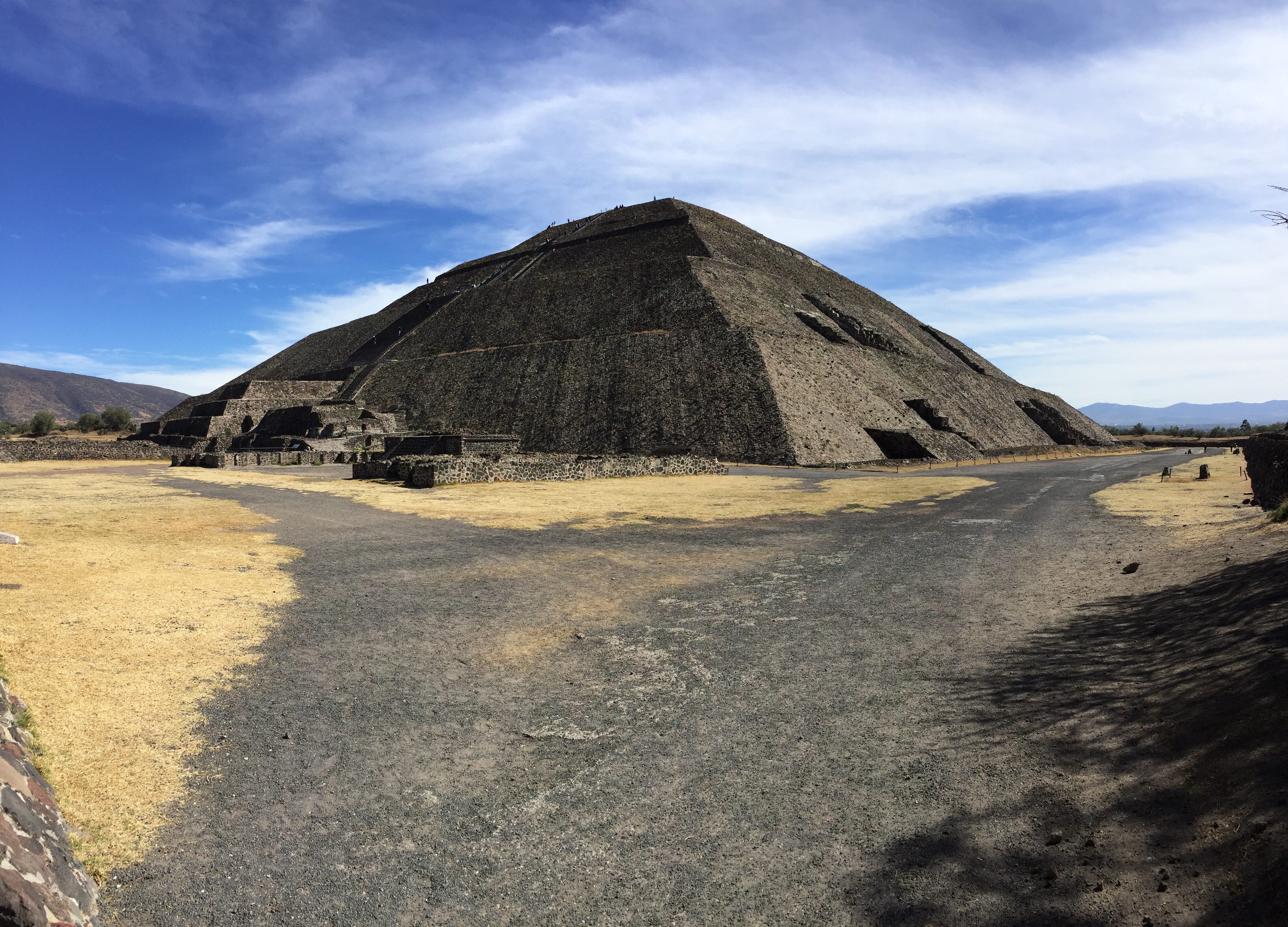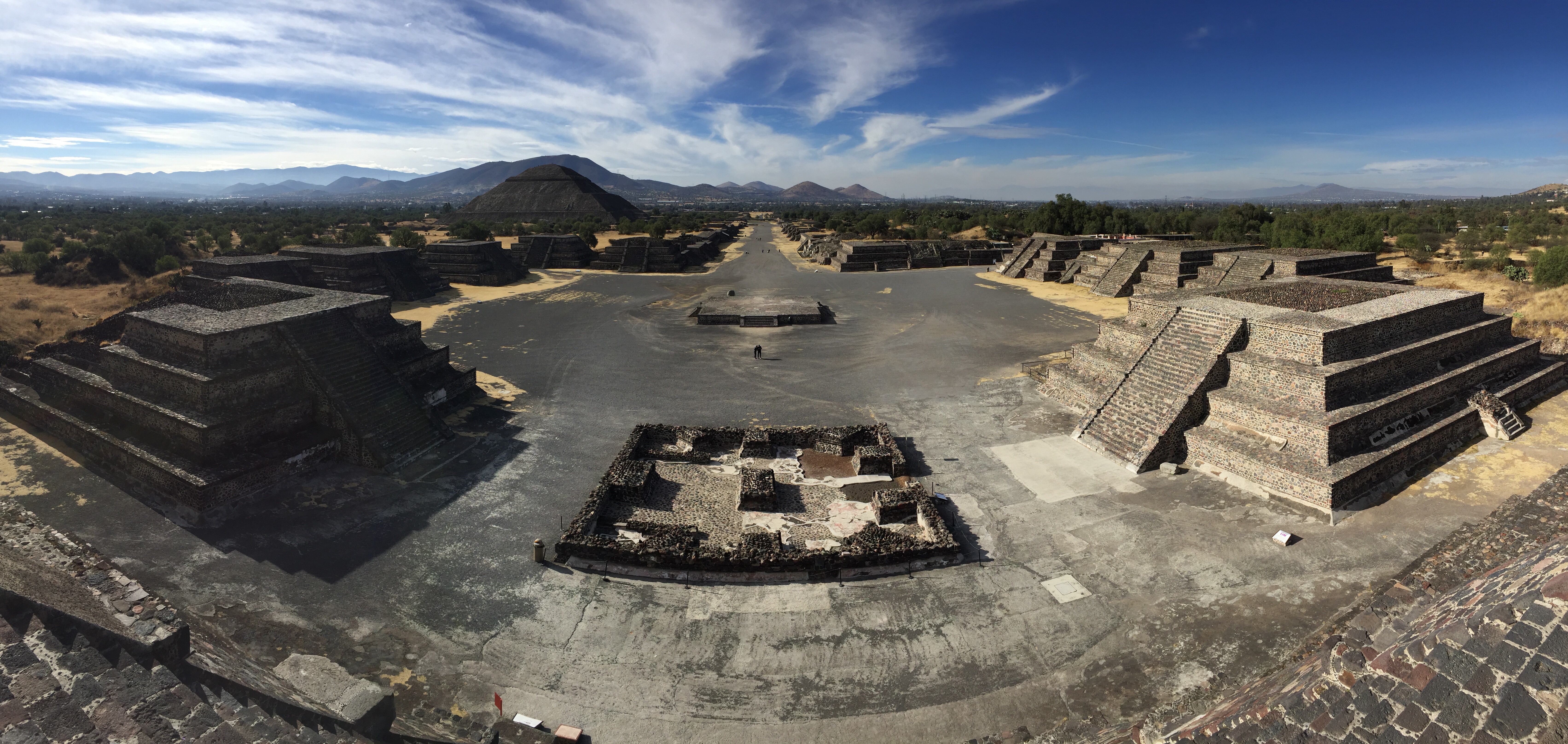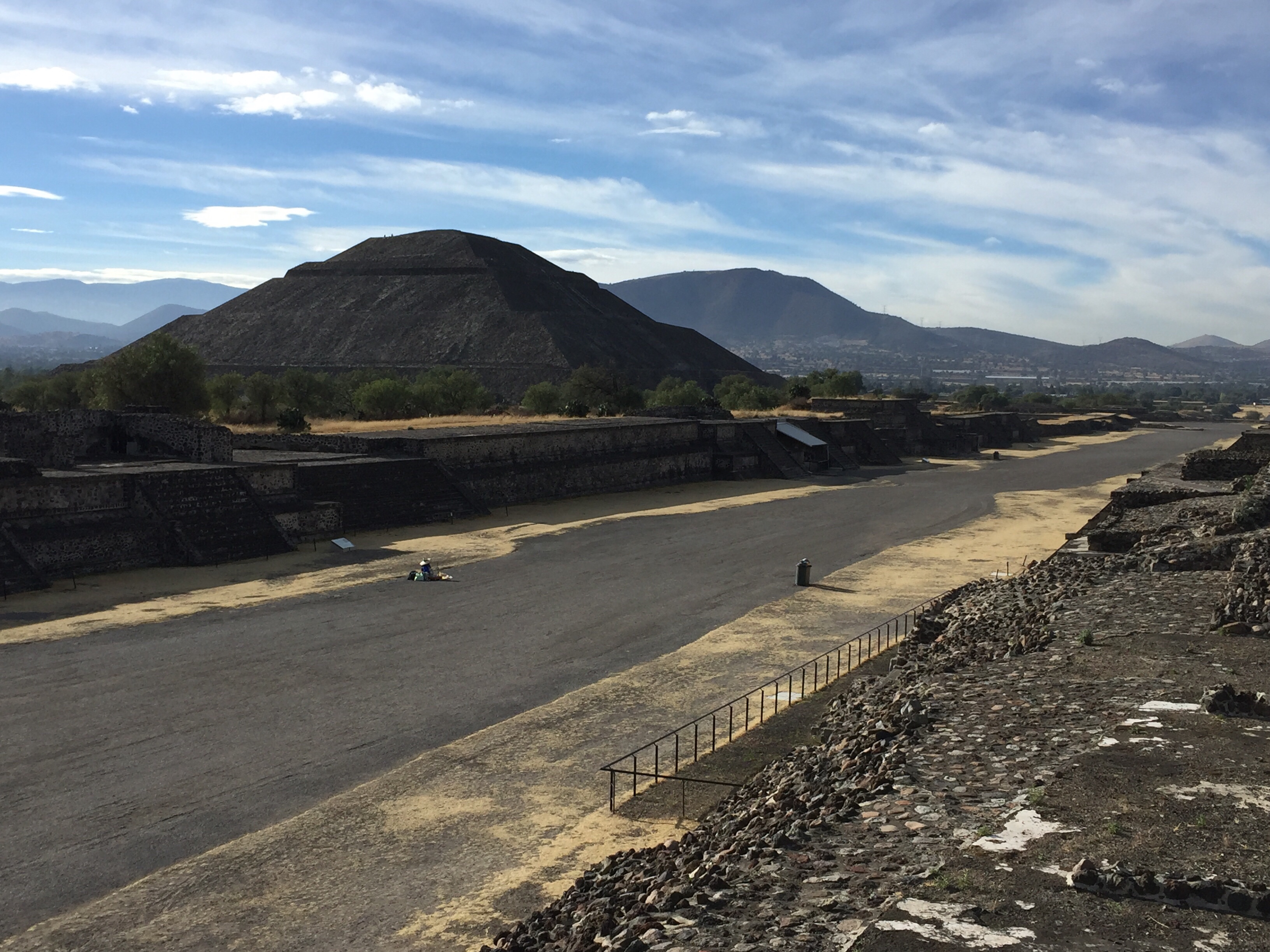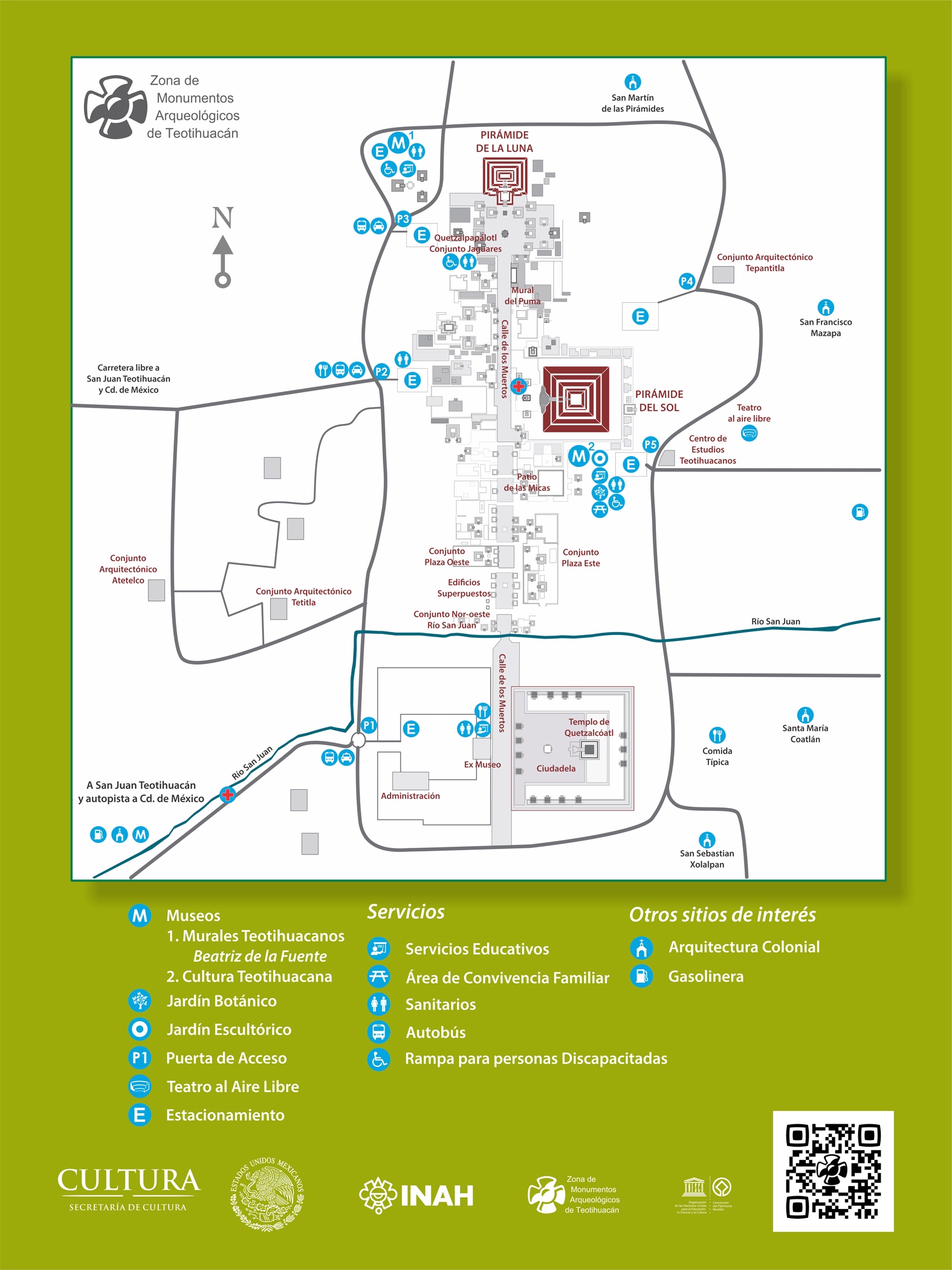Teotihuacán was Mexico’s biggest ancient city and the capital of what was probably Mexico’s largest pre-Hispanic empire. It was a major hub of migration for people from the south, with multi-ethnic groups segregated into neighborhoods. Studies involving DNA tests in 2015 theorize that it was these cultural and class tensions that led to Teo’s downfall.
One hour north of Mexico City (by bus) this complex of awesome pyramids, set amid what was once Mesoamerica’s greatest city, is among the region’s most visited destinations. The sprawling site compares to the ruins of the Yucatán and Chiapas for significance and anyone lucky enough to come here will be inspired by the astonishing technological might of the Teotihuacán (teh-oh-tee-wah-kahn) civilization.
Set 50km northeast of Mexico City, in a mountain-ringed offshoot of the Valle de México, Teotihuacán is known for its two massive pyramids, the Pirámide del Sol (Pyramid of the Sun) and the Pirámide de la Luna (Pyramid of the Moon), which dominate the remains of the metropolis.
Though ancient Teotihuacán covered more than 20 sq km, most of what can be seen today lies along nearly 2km of the Calzada de los Muertos. Buses arrive at a traffic circle by the southwest entrance (gate 1), while four other entrances are reached by the ring road around the site.
